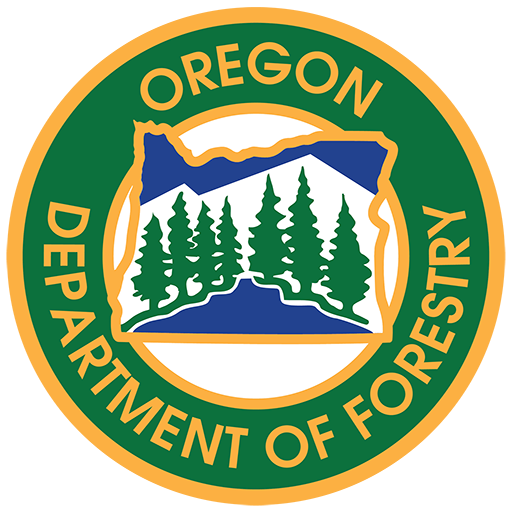Joint news release with Pacific Northwest Wildfire Coordinating Group
Fire season is looming. And while a mix of unusually cool and warm weather systems have seemingly captured all four seasons during the month of April, fire weather forecasters are predicting an early start to fire season in the Pacific Northwest. With the window of opportunity quickly closing, now is the ideal time to create defensible space around your home before fire season arrives.
As you begin spring clean-up, the Pacific Northwest Wildfire Coordinating Group (PNWCG) encourages you to consider chipping or recycling your yard debris. If burning is the only option to dispose of woody material, safety needs to be your first priority: escaped debris burns are the leading human cause of wildfires. These burns are particularly common in the spring and fall when people assume conditions are OK.
“The best rule of thumb,” says Oregon Department of Forestry Fire Prevention Coordinator Tom Fields, “is to check the conditions and not the calendar.” Fields cautioned that a fire can spread out of control any time of year given the right conditions. “All it takes is a few warm days to dry out the fine fuels, like grass and brush, to prime the landscape for wildfire.”
And wind only amplifies the risk. PNWCG fire officials say the majority of escaped debris burn fires take place during windy conditions.
“Even the safest of yard debris burns can get away,” says Angie Lane from Washington Department of Natural Resources. “One of the most common issues is when days or weeks after the fire is out, a warm, windy day will breathe life into an old pile and rekindle it back to life.” Lane says if you have already burned this spring to be sure and return to the site periodically and make sure that there is no heat or smoke coming from the pile.
Fire officials offer these additional simple safety tips that will help prevent unnecessary escaped debris fires.
- Call before you burn. Burning regulations are not the same in all areas and can vary with weather and fuel conditions. If you’re planning to burn, check with your forestry office, fire district, or air protection authority to learn if there are any current burning restrictions in effect, and whether a permit is required.
- Place yard debris in an open area away from structures, trees and power lines.
- Create small piles (4 feet by 4 feet) to better manage the burn.
- Cover portions of piles for later. Only have a narrow weather window before the rains come? Cover portions of piles with a tarp or polyethylene plastic (landscape material) to keep a portion dry for lighting later. When conditions improve, check with your local fire agency for any regulations in place.
- Never burn under windy conditions.
- Never use gasoline or other accelerants (flammable or combustible liquids) to start or increase your open fire. Every year, 10 to 15 percent of all burn injuries treated at the Oregon Burn Center in Portland are the result of backyard debris burning.
- To keep the fire in place, scrape the area around your pile down to bare soil at least 3 feet out on all sides. Fire needs fuel to burn and spread. If the surrounding fuel is eliminated, so are the chances of a fire escaping.
- Keep a shovel and turned-on hose nearby to manage the burn in case it escapes.
- Make sure the pile is completely out (no embers or smoldering) before leaving.
- Return periodically over several weeks to make sure the pile is still out. The pile should have no heat, no smoke. Spring pile burns that were not completely put out have been known to smolder and ignite months later.
- Burn only yard debris. Organic materials like leaves, sticks, and branches are the only things that should be in your piles. Environmental quality regulations prohibit the open burning of any material that creates dense smoke or noxious odors.
Remember: Escaped debris burns are costly. State laws require the proper clearing, building, attending and extinguishing of open fires any time of year and come with a sizable fine if not in compliance. If your debris burn spreads out of control, you could be responsible for the cost to put it out and very likely the damage to neighboring properties. This can range from a few hundred to tens of thousands of dollars.

